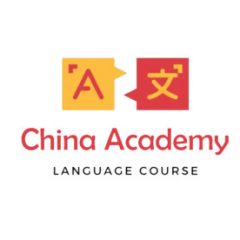We are all familiar with the classic images of tai ch’i chuan being practised in Chinese parks but, integral with these slow, graceful movements lies a method of self-defence that is beneficial for mind, body and spirit
It has been said that Chinese philosophy can be likened to a tree: you pick a leaf, it connects to a branch which connects to a trunk and roots which spread through the earth to other trees and on and on. This interconnection can be seen between the principles of feng shui, traditional Chinese medicine (TCM), and the ancient Chinese art of tai ch’i which are all rooted in the Five Element theory and a belief in ch’i energy.
The tai ch’i symbol is a visual representation of opposing, yet inter-related, forces of energy known as yin and yang. The concept of change from yin to yang, and of yin cancelling out yang are the basic principles of the art of tai ch’i, which literally translates as ‘supreme ultimate fist’ or ‘boxing’.
Fight The Good Fight
The founder of tai ch’i is generally thought to have been a Taoist monk called Chang San-Feng. As the Taoist monks spent many hours sitting in one position meditating, they needed to have a system of exercise which could loosen the joints and maintain the flow of energy through their bodies. Monks, regarded as peaceful and non-violent, were often also the target of unsavoury bandits, who found them easy to rob. It was therefore believed that they should be able to defend themselves, preferably without the use of weapons or apparent violence.
Legend has it that Chang San-Feng observed a fight between a snake and a white crane. When the bird reached down to attack the snake, the snake slithered just out of reach. Then when the snake came up to attack the bird, the bird spread its wings and turned to create a defence against the attack. The fight lasted some time, with no winner and no loser. Each creature reacted just at the right moment to parry the advances of the
other. Chang San-Feng saw that they also used the principles of yin and yang. When a yang attack was delivered it could be effectively parried by using a yin defence. Chang adapted the movements of these, and other creatures, into the movements of tai ch’i. However, as Chang also had a knowledge of TCM and Taoist philosophy, he incorporated these principles into the art of tai ch’i as well. On its simplest level tai ch’ichuan is a health exercise. However it is not what might usually be regarded as ‘exercise’. How can these slow movements be exercise? In order to understand why they are, it is essential to have an awareness of the concept of ch’i.

The principles of TCM, believed to be over 2,000 years old, have their roots in the concept of yin and yang. Practitioners believe that there are meridians or pathways which travel through the body carrying ch’i energy. Tai ch’i chuan promotes the smooth flow of this energy by performing specific controlled movements in co-ordination with relaxed, natural breathing and the application of yi, the intent or focus of the mind. Tai ch’i exercises stimulate the free flow of ch’i through the channels or meridians.
Aside from promoting the flow of ch’i energy, tai ch’i can also help to increase flexibility and suppleness of the joints and exercise various muscle groups. The smooth, gentle movements also aid relaxation and help to keep the mind calm and focused. These benefits are extremely useful in today’s stressful society.
To gain the maximum health benefits from tai ch’i chuan it is important to have a full understanding of the purpose of each posture or movement. In order to appreciate the correct postures or movements one should be familiar with the martial applications, how they were derived and how they apply in practice.
The Right Posture
The original tai ch’i ‘Form’ or series of carefully choreographed movements contained 13 Postures. These postures represented the Eight Gates and Five Steps.
The Eight Gates, or movements, of tai ch’i chuan are Ward-Off, Roll-Back, Press, Push, Pull-Down, Split, Elbow and Shoulder-Stroke.
chuan can also help to increase flexibility and suppleness of the joints and exercise the various muscle groups”

These postures or gates represent the four cardinal Directions (North, South, East and West) and the four Corners (South-west, North-west, South-east and North-east.) These Gates also relate to the Eight Trigrams of the pa kua – Ch’ien, K’un, K’an and Li being the four cardinal points, and Sun, Chen, Tui and Ken the four Corner points of feng shui.
The Five Steps are Advance, Retreat, Look Left, Look Right and Central Position. These steps relate to the Five Elements: Metal, Wood, Water, Fire and Earth.
These aspects of tai ch’i chuan have a relevance in the application of tai ch’i as a fighting art. By using the various techniques and moving in the appropriate directions, the principles are applied as a practical self-defence system. Once the movements or sequences are learned and practised regularly the responses become natural and spontaneous.
A Growing Practice
Tai ch’i chuan, since its early beginnings in China, has grown and developed into an art that is enjoyed by millions throughout the world. The traditional family styles of Chen, Yang, Wu, Sun and Li have spread, and in the East have been developed into simplified forms which are practised en masse in public parks. They have also developed a Competition Routine which contains elements of the family styles of Chen, Wu, Yang and Sun. In the West we can see a growing interest in the traditional family styles of Chen, Wu and Yang which has a correspondence to both the growing experience of Western practitioners, many of whom have now studied for over 20 years, and the increased visits of Chinese Masters such as
Chen Xiao Wang, the Wu Family Masters and Yang Zhenduo. Whatever your interest there are now schools in every major town in the UK with regular international conventions taking place throughout Europe, America and the East.



